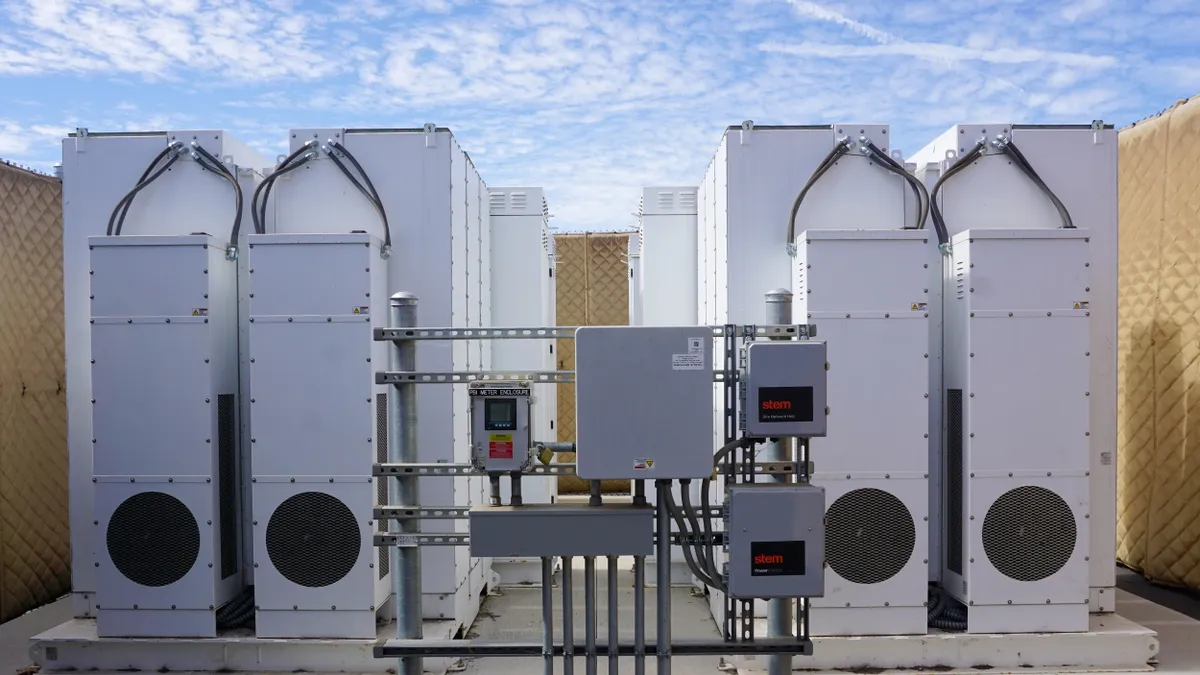Dive Brief:
- The U.S. energy storage market once again broke records in the third quarter — installing 3,515 MWh of new storage — and is likely to surpass that number in the last quarter of the year, according to a report from Wood Mackenzie and the U.S. Energy Storage Association (ESA).
- Front-of-the-meter installments amounted to 998 MW/3,198 MWh this quarter. California, Texas and Arizona led the utility-scale sector, according to the report, released Thursday.
- The energy storage industry has seen unprecedented growth in the last year. In the fourth quarter of 2020, more than 2,100 MWh of energy storage came online in the country — a 182% increase over the previous quarter.
Dive Insight:
Last year, 1,464 MW/3,487 MWh of new storage came online in the U.S., marking a 179% increase over 2019 in MW terms — and experts project that the market will continue to quickly expand. In a November analysis, BloombergNEF concluded that energy storage deployments across the globe will reach 358 GW/1,028 GWh by the end of the decade, with the U.S. and China representing more than half of that growth. Storage paired with renewable resources, like solar, are becoming particularly popular, the report found.
ESA and Wood Mackenzie’s energy storage monitor report took into account certain factors, like an expected solar investment tax credit extension and a standalone storage tax credit, for the first time this quarter, increasing forecasted deployments.
On the residential side, the market deployed another 97.9 MW/225 MWh of storage this quarter. However, the analysis noted that projects continue to face backlogs because of constraints to solar modules and battery supplies.
On the front-of-the-meter side, meanwhile, California remained the leader in the deployments.
“Wood Mackenzie expects up to 4.7 GW of utility-scale storage to come into operation in 2021, which means this record-breaking quarter is only the beginning of a wave of major new projects set to come online this year and next,” Vanessa Witte, Wood Mackenzie storage analyst, said in a statement.
The increasing build out of renewables and broader transition away from fossil fuels is a key driver of storage growth across the country, said Jin Noh, policy director with the California Energy Storage Alliance. In California, the alliance expects that around 3,540 MW of storage will come online in 2022 and 2023.
Noh agreed that supply chain constraints can be a challenge for the sector. However, “given the fact that we have a global storage market now… and the unrelenting need for storage procurement and installations, we’ve heard from battery manufacturers that they’re rapidly building up [their] manufacturing capacity,” he said.















